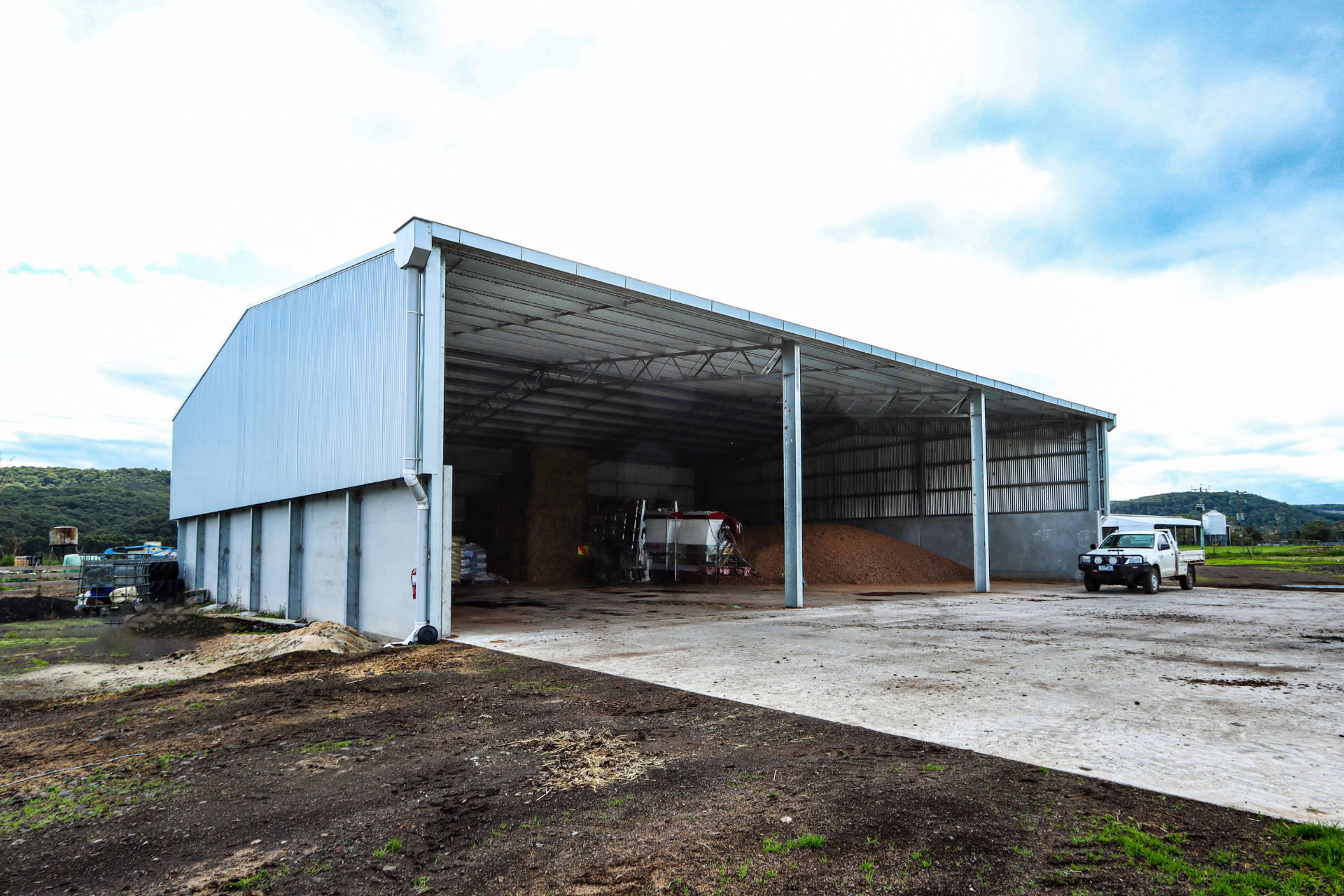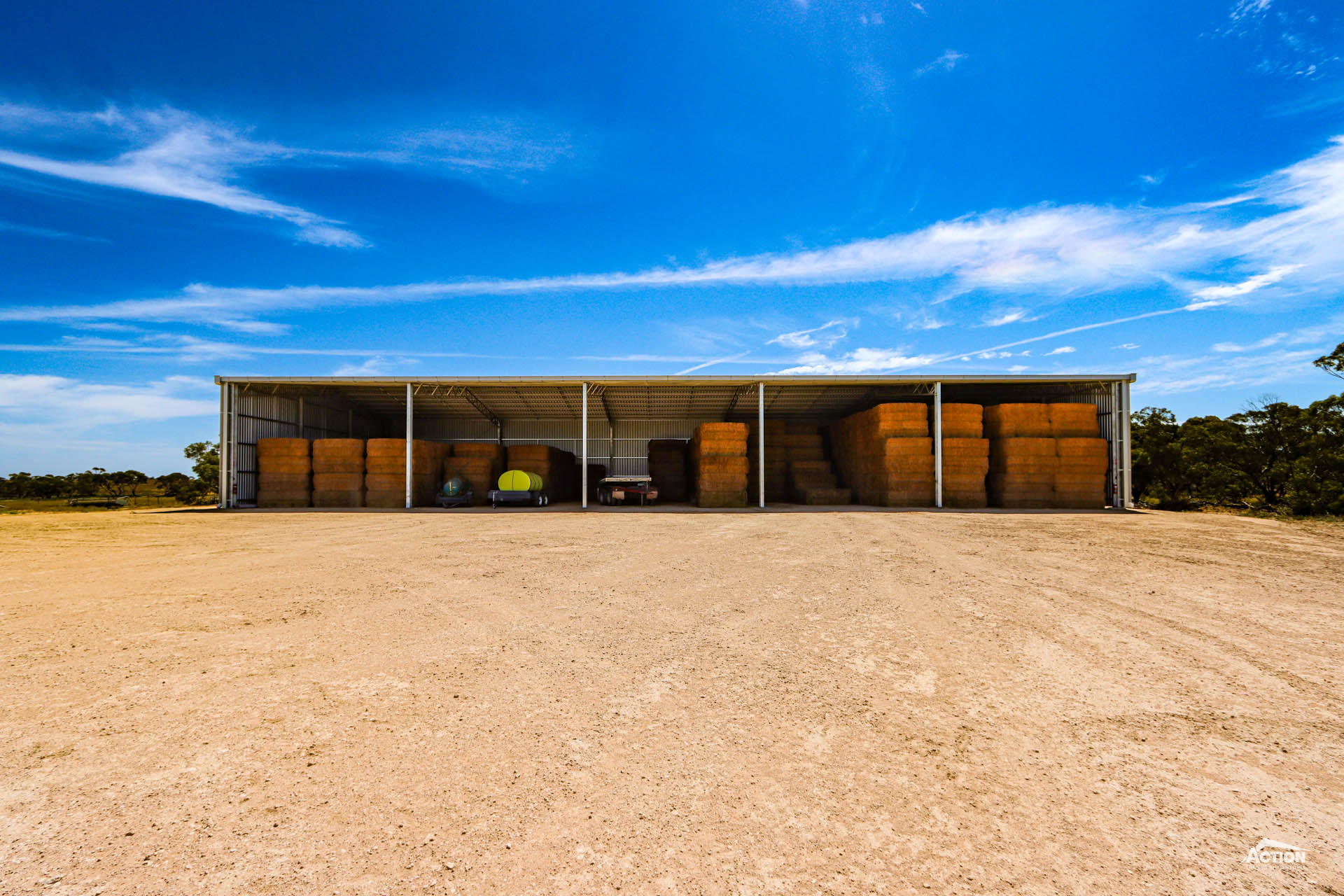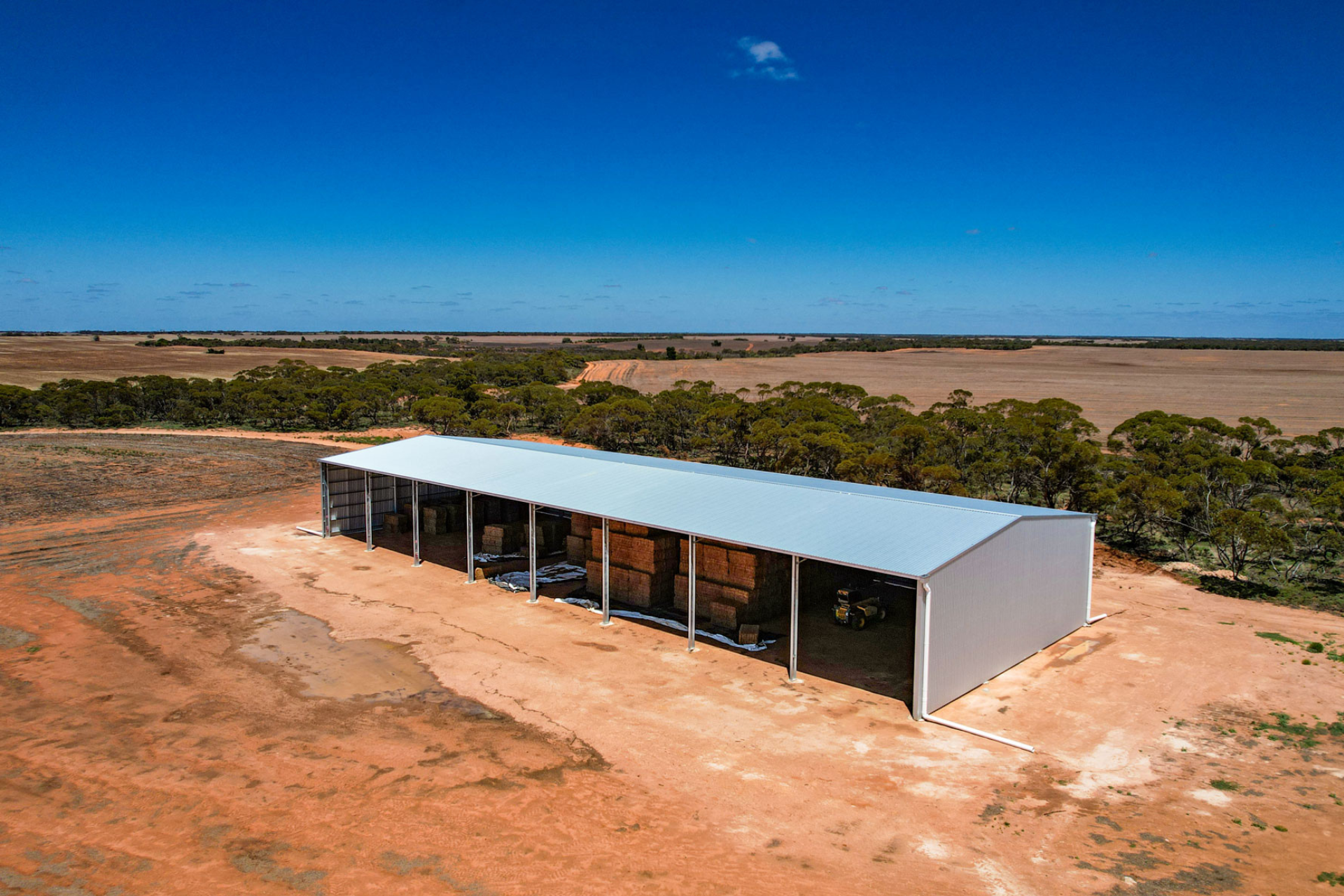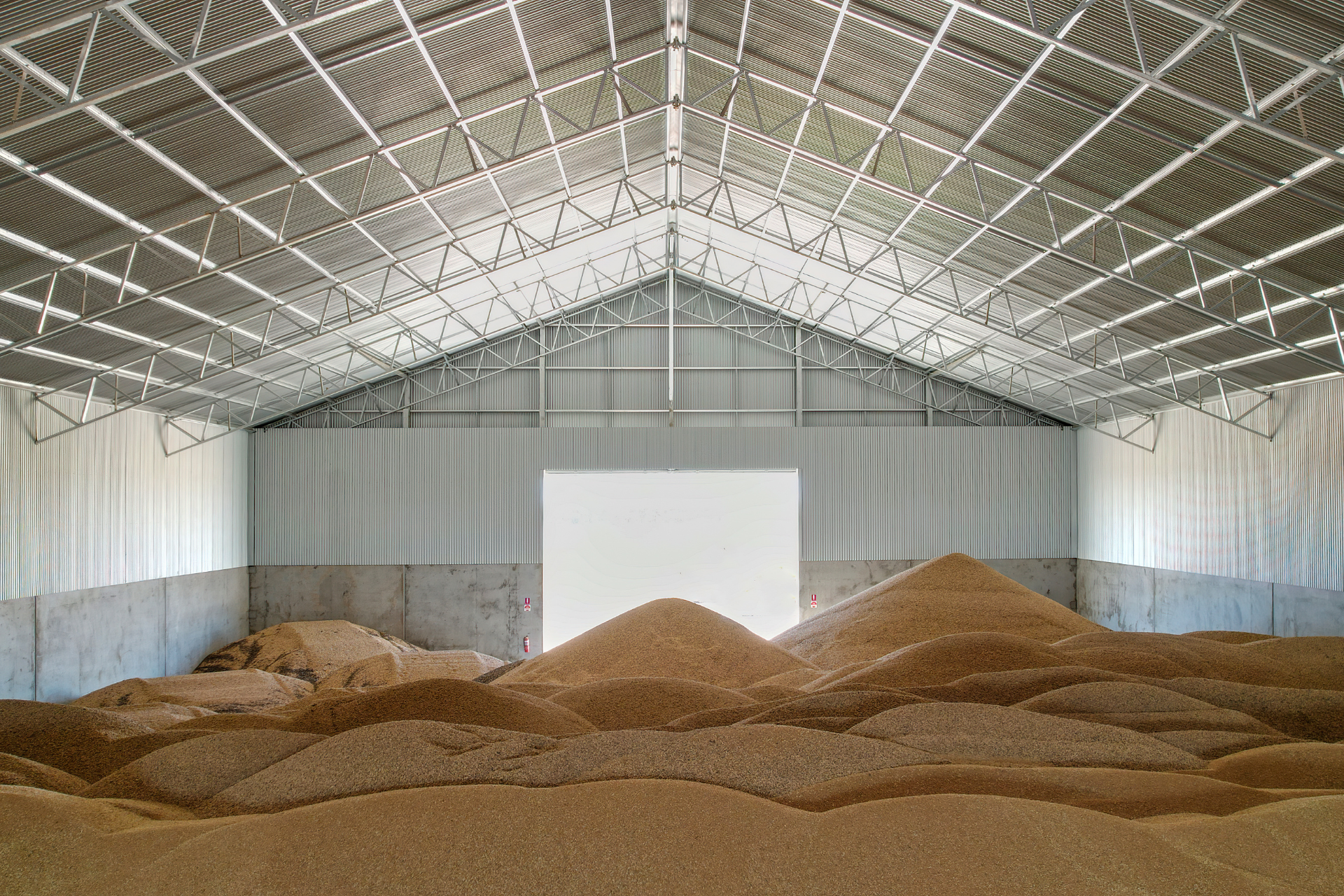What is the cost to build a commodity storage shed in 2024? How much does a concrete panel shed cost?
A commodity shed is important infrastructure, particularly for Australian feedlots and dairies, whether it is for storing fodder, bedding or fertiliser.
These are all valuable commodities and the ability to store them safely, securely and well protected from the weather helps avoid being impacted by price fluctuations or supply issues.
If you are in the market for a new commodity shed, you are likely wondering how much it costs to build one.
The cost to build a commodity storage shed is exactly what we discuss in this article!
Before we begin, it is important to note that commodity storage requirements can vary significantly between operations.
With this in mind, we have provided information and price guides for a variety of commodity shed sizes and designs.
We trust this is a useful resource for you as you begin your project budgeting.
How Much Does It Cost To Build A Commodity Storage Shed?
The average cost to build a commodity storage shed is approx. $300,000 including GST.
This covers a wide range of sizes and configurations, from simple open front sheds for small scale dairies to more involved designs with segregated bays for large feedlots.
To understand how prices can vary from project to project, check out the sizes and price list below.
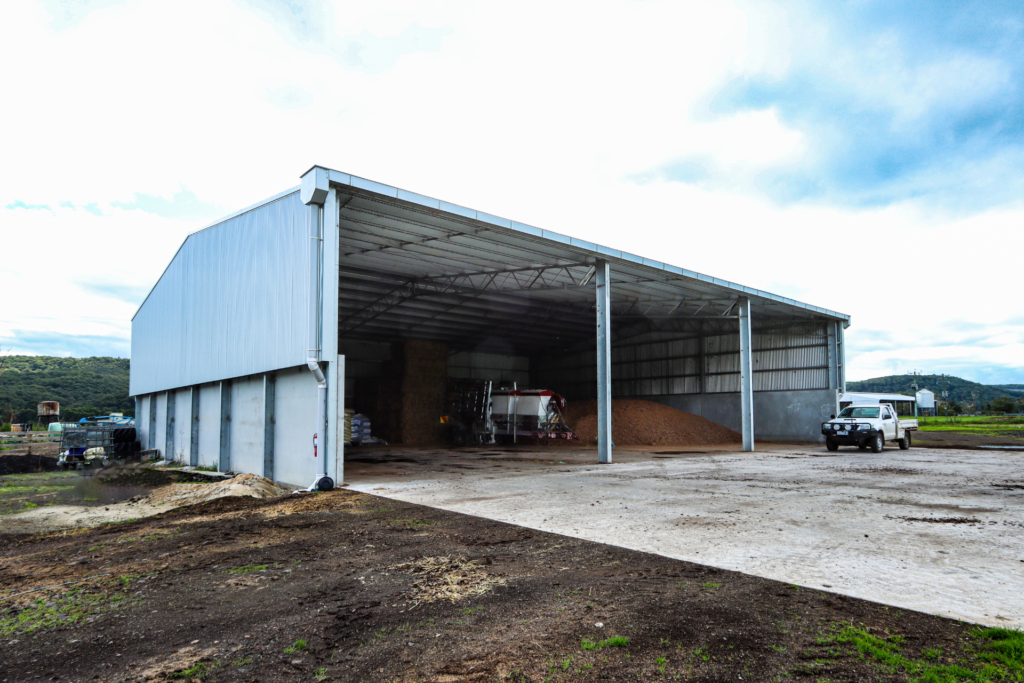
Commodity Storage Shed Sizes & Price List
We have collated some of the most popular commodity shed sizes and provided an approximate price range for each option.
We have also included a number of designs for you to consider, too.
Please note: These prices include GST, footings, installation and a concrete slab throughout and are indicative prices only.
- 24m (L) x 12m (W) x 6m (H) open front shed with concrete panels costs approx. $180,000 – $200,000.
- 24m (L) x 21m (W) x 6m (H) open front shed with concrete panel costs approx. $240,000 – $290,000.
- 80m (L) x 24m (W) x 7.5m (H) open front shed with segregated concrete panel bays costs approx. $750,000 – $1,200,000.
Now that we have an idea of the different sizes and designs available and how much they cost, it is helpful to understand the factors that influence commodity shed prices.
Factors That Influence The Cost To Build A Commodity Storage Shed
There are four main factors that will influence the cost of your project. These are shed size, shed design, shed configuration and the materials.
We discuss these below.
1. Shed Size
The shed size you choose will directly impact the cost of the project, simply because the bigger the shed the more materials and labour that are required.
It is a good idea to factor your future storage requirements into the shed size though. While increasing the size can be an additional cost now, it may save the cost of another new shed build in the future.
A cost-effective way to gain extra coverage over the contents of your shed – without increasing the shed size – is to install a cantilevered canopy.
You’ll find more cost-saving suggestions further on in this article.
2. Shed Configuration
The configuration you choose for your commodity storage shed will also influence the price. For example, a longer shed configuration is usually more cost-effective than a wider shed configuration.
3. Shed Design
The design features you include in your commodity storage shed will also add to the overall price. These could include concrete slabs, concrete panel walls and sliding doors.
Having said that, many of these features are essential for functional and effective commodity storage.
You could consider using removable concrete t-walls for segregation rather than permanent concrete walls. While this may not be a significant cost-saving it has the added benefit of creating a more versatile shed design.
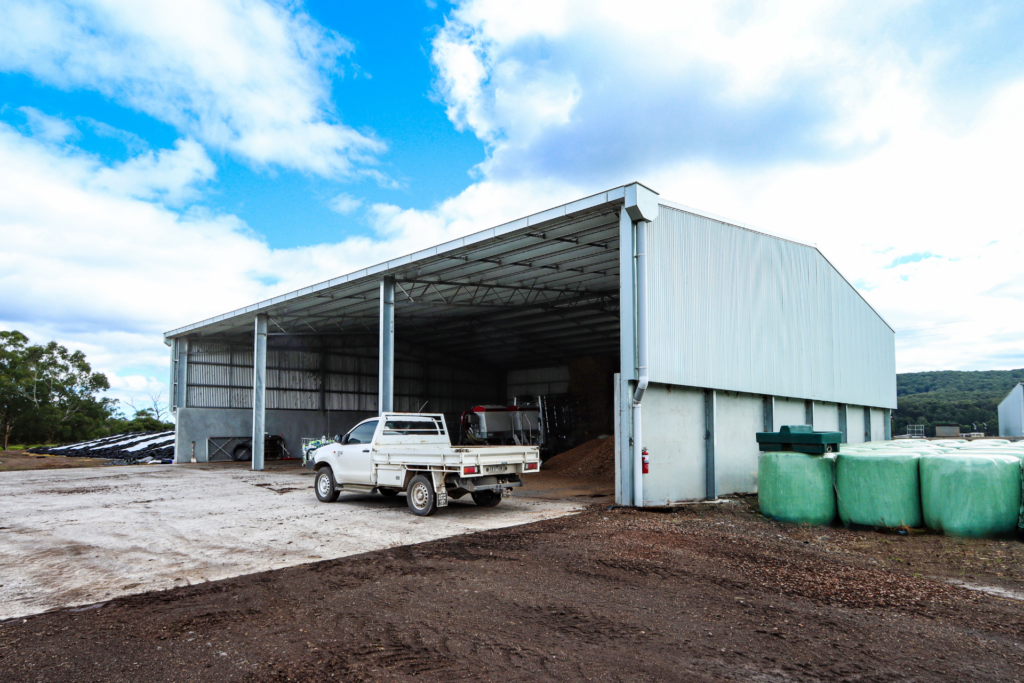
4. Materials
There are several material costs to be aware of when building a commodity storage shed.
First, is the cost of structural steel.
Our sheds are manufactured from Australian-made steel including heavy-duty UB columns and open web trusses. While steel prices are lower post-Covid, Australian-made steel typically costs more than imported steel. Learn about 2024 steel prices – here.
Keep in mind though, that Australian-made steel is the highest quality steel available due to the high standards and quality control in place in Australian manufacturing.
Similarly, the cladding on our shed builds is also Australian-made.
The three cladding options we offer are zinc cladding, galvanised cladding and Colorbond cladding. Zinc cladding is the most cost-effective and is used for most of the farm sheds we build.
Feedlots and dairies are corrosive environments though, so the additional cost of galvanised cladding or Colorbond cladding can be worth it in the long run.
This leads us to the next material cost to keep in mind – the cost of corrosion protection coatings.
While hot dip galvanising is by far the most effective steel coating, it is also the most expensive, having a much higher initial cost compared to alternatives like paint or pre-galvanizing.
Having said that, hot dip galvanising has the lowest long-term cost. And we don’t recommend compromising on corrosion protection!
You can learn all about hot dip galvanising in the video below.
Finally, many commodity shed designs for feedlots and dairies incorporate concrete panels which also add to the overall price of the shed.
However, these are often a recommended addition particularly when storing grain, fertiliser or almond hulls.
As well as making loading and unloading the shed easier, concrete panels can also reduce maintenance costs in the long run. For example, concrete panels increase the longevity of your shed cladding by protecting it from corrosion and machinery damage.
That’s a summary of the four main cost influences. Some other factors to consider are the complexity of your project and the shed company you work with.
For example, if there is poor access to the shed site, this will increase the installation time and this will be reflected in the shed price.
Or if you choose to work with a shed company that simply supplies the shed kit, there may be additional costs that haven’t been budgeted for, such as council permits.
Next up, we discuss potential cost-savings for your commodity storage project – without sacrificing quality!
How To Save Money On Your Commodity Storage Shed
There are several ways to save money on your commodity shed project – without compromising on quality or sacrificing functionality.
We have already mentioned some of these – such as installing a canopy to gain extra coverage, planning for future storage requirements or opting for removable t-wall panels rather permanent walls.
Below we discuss three other ways to get the best value for your money.

These include choosing a standard size span, choosing a cost-effective configuration and working with the right shed company for your project.
1. Choose A Standard Size
One way to reduce the cost to build a commodity storage shed – which we recommend for all farm shed builds – is choosing a standard size span.
Some span sizes are more cost-effective than others. This is because we work with a range of standard-size spans that are both practical and cost-effective.
Choosing a standard size span for your shed can provide a cost saving as a truss jig does not have to be set up specifically for your project. This saves both time and money in the drafting and manufacturing stages.
There are also a number of standard size bay spacings that also usually work out to be most cost-effective. These include 8 metre and 8.5 metre spacings.
So, where possible we would recommend choosing a standard span and standard bay spacings for your project – but we do understand that these sizes won’t work in every situation.
2. Choose A Cost-Effective Configuration
As we have already mentioned, some configurations are more cost-effective than others so keep this in mind.
It is important to choose a configuration that suits your requirements best though, rather than the options that will be cheapest. A dysfunctional design will be frustrating and could potentially cost you more money in the long run.
3. Choose The Right Farm Shed Company
Choosing the shed builder or manufacturer that is the right fit for your project can go a long way towards reducing project costs – and alleviating stress!
We would recommend building your commodity shed with a company that can look after the complete project.
Here at Action Steel, we don’t just manufacture the steelwork. We also apply for the required council permits, coordinate the erection stage including concrete panels and slabs and project manage your shed from initial sign-up to completion.
With Action Steel managing all these steps, it means your project becomes a much less stressful and time-consuming experience for you. And time is money!
So, that’s a wrap on the cost to build a commodity storage shed for your dairy or feedlot enterprise, factors that influence prices and potential cost-savings.
For more articles and information like this, browse our Learning Hub. We have also listed resources below that might be relevant to your project planning:
- How Much Do Concrete Panels For Sheds Cost?
- UB Rafter Vs Open Web Truss
- Calving Shed Guide (PDF Download)
- Partial Shade Versus Feedlot Sheds
For pricing on your commodity storage shed, simply submit a REQUEST A QUOTE form or call 1800 687 888 to speak with one of our building consultants – we would love to hear from you!

